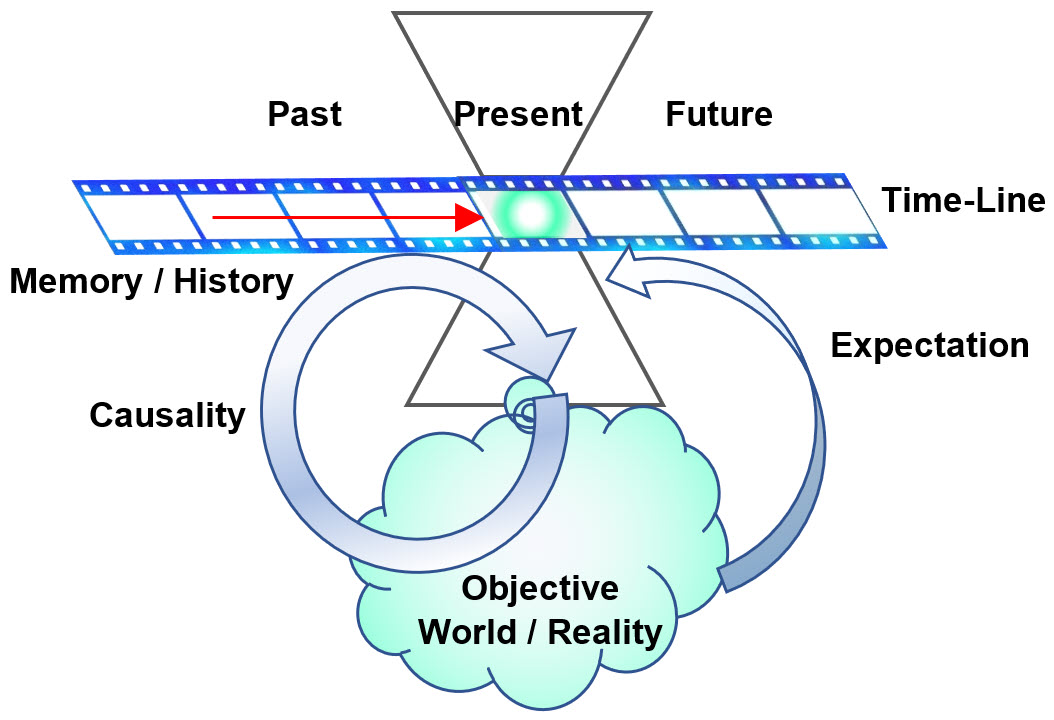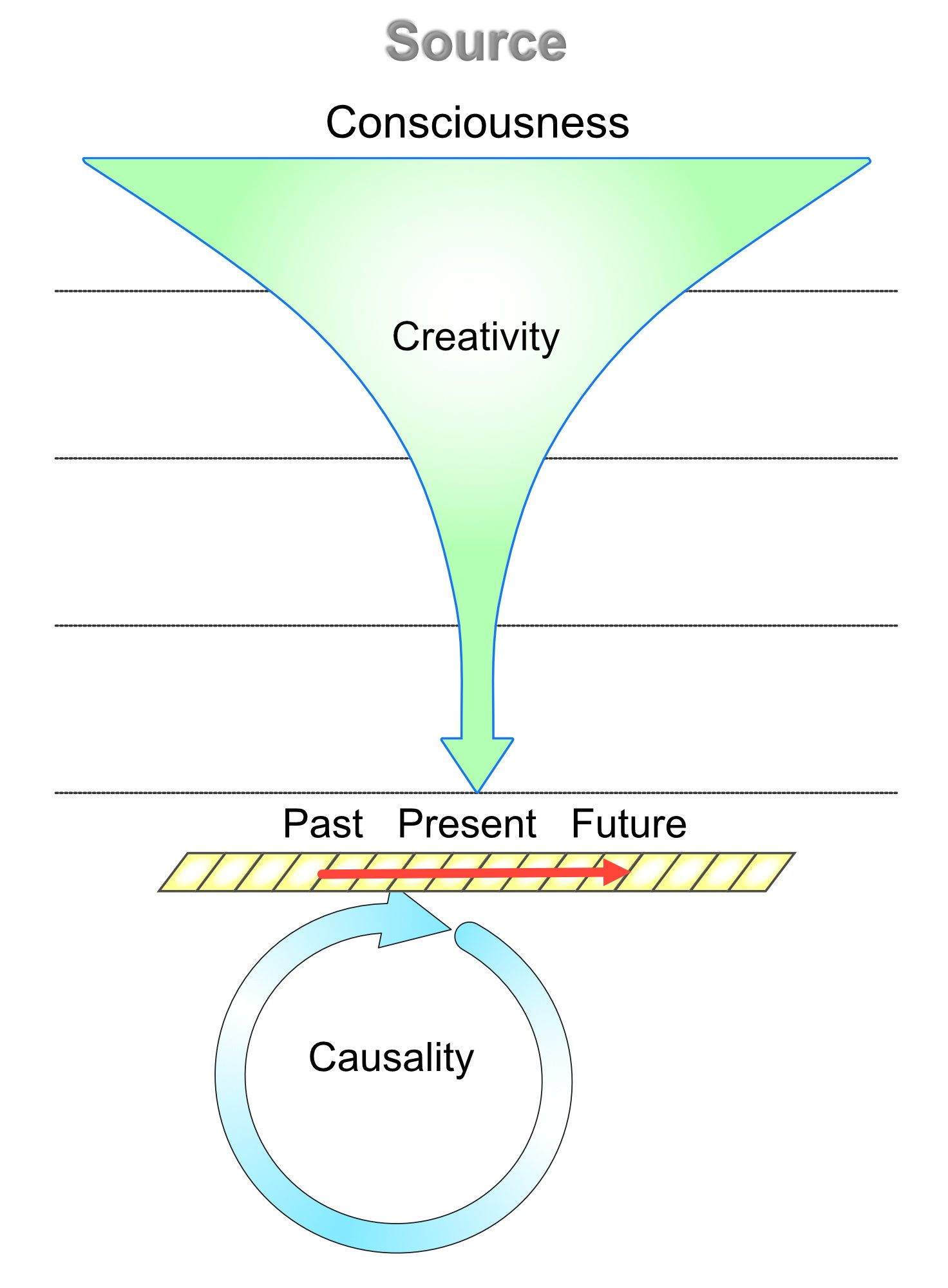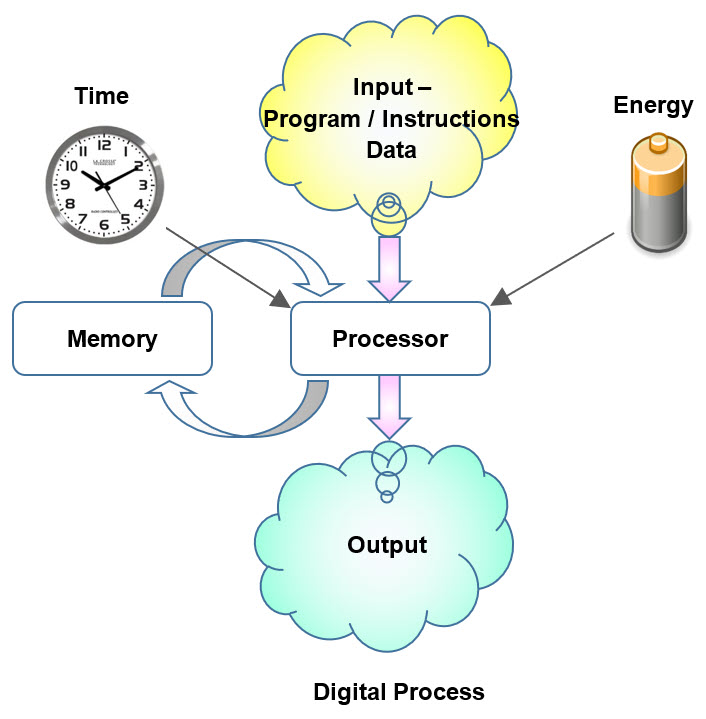Causality arises from Consequences
What we project into creation is bound by the Law of Consequence. Consequences come back to us and enter into our now moments. They also shape what we perceive in creation. This establishes a chain of cause and effect, a cycle of causality, that has a major impact on our experience in creation.

Our interaction with and creative endeavours in creation produce consequences. These appear in our living reality. This feedback provides a learning process, where we get to assess our activities. Creation provides an exploration of possibility with tremendous opportunity for learning. If we learn our lessons and adapt accordingly, we integrate the experience and progress towards fulfilling the original intent for our entry into creation.
If we ignore such feedback and associated lessons, the consequences fail to be resolved and they accumulate on our time-line. They remain as a historical burden that weighs on our present experience and activity. They also constitute our unconscious, both individual and collective, as stuck experiences, traumas and so on that remain for us to process toward completion and resolution.
These historical burdens progressively limit our freedom, creative capacity and agency in creation. Our ‘world’ gets smaller, appropriate to the level of activity we can safely handle. We can reverse this process by facing our history and working through the challenges it presents, to progressively resolve them. This liberates stuck energies and situations, creating more freedom, empowerment, connection and scope within creation. Our greatest Teacher can be the realities that we face in our daily lives.
This Causality is also known as the ‘Wheel of Karma’ and is illustrated by the revolving circle in the attached diagrams. Positive effects feed back to us, as good fortune. Negative effects feed back into our lives, as challenges and shadow influences.
When we’re immersed deeply in creation, we can feel fenced in or overwhelmed by the circumstances in our lives that we don’t appear to control. It is this cycle of causality in action, possibly over time scales and ranges of conditions beyond our present perception.
The key to escaping from what can seem like a vicious circle, is to harness our creative power of consciousness. We can build connection to higher levels in consciousness and ground this into our present world, to help face challenges and resolve issues. There can be a creative interplay between these two great influences, of consciousness and causality, that calls forth a more powerful presence of consciousness and a deeper learning experience.
Causality does not Completely Determine Reality
Creation lives in the Present. Causality comes into the Present as our Past. It also defines the relationship between the past and our Present. The things we need to work on are preserved for us to process towards completion, both beneficial and challenging. This represents our History, both individual and collective. Memory mediates our interaction with the Past and its History.
Causality in turn derives from Creation. The Creativity of Consciousness both sparks and sustains Creation, as illustrated in the attached diagram. Creativity starts from a place of freedom and infinite potentiality near Source. It becomes more defined and specific as it expresses through deeper levels in creation. It is progressively more confined by the Forms it generates and limited by the Consequences of its activity.

Creation then is an interplay between these two primary influences of Creativity and Causality. Creativity is expressive, exploratory and open. It is contained and shaped by Consequences and Causality. These two influences form a primary active / passive polarity in Creation.
Acausal Relationships play a Significant Role in Creation
Both Creativity and Causality are needed in creation. The balance between them determines the type of creation we experience. Deep in creation, in physical reality, we are heavily immersed in the Consequences of many chains and cycles of creation. We have accumulated much history. So, we are strongly influenced by Causality. But we still have latitude and a degree of Free Will for Creative expression.
At higher levels in creation, where Consciousness is more integrated and free, there is greater scope for Creativity. More Open systems favour Creativity. But there is still responsibility for Consequences.
The ideal is to have a balanced relationship between Creativity and Consequences / Causality that is attuned to circumstances.
Science in its present form is highly focused on Causality and on defining causal relationships. Given the significance of Causality, it has been highly successful in this role. However, this does not completely define nor explain reality. Creativity and Acausal relationships play a significant role in Creation. This role becomes progressively more important, as we integrate and expand Conscious connection.
Science, to its great credit, has helped define some of its limitations. For example, the Principle of Uncertainty in physics sets specific limits on what can be known observationally about the finer states of matter.
We also have Godel’s Incompleteness theorems in mathematics. Mathematics is the quintessential logical system that underpins science. Godel’s theorems define that a logical system cannot completely prove its own consistency. This is entirely consistent with the principle that a closed system cannot be self-existent, in the sense of creating itself. There needs to be a degree of openness, to Creativity and ultimately to Consciousness.
Digital Processes embody some Creation Processes
Digital processes underly most modern technologies, for example, computers, communications, internet, phones, TVs, control systems and so on. These mimic some of the fundamental processes in creation that we have already explored. Key elements are illustrated in the attached diagram.
The central element is the processor. This mimics the brain, as a tool or transducer for consciousness in our 3D body. It receives instructions and encryptions, as input software and data. This comes from consciousness in some form. Ultimately, it comes from the pure consciousness of Source, but passes through many intervening levels and states, not all of them natural. This mimics our stream of consciousness in the present.
The processor applies the instructions to the data and stores the results in memory. This completes a cycle. The next cycle takes instructions and data from memory, processes them and returns results to memory. The chain of processing continues, accomplishing its tasks. The continuous cycling to and from memory mimics the wheel of causality from the diagrams above. The cycles are synchronised by a clock, representing time in the process. The process is powered by an energy source. Ultimately, the results of the whole process are output to the external world.

The sequence of cycles represents a serial timeline in the processor. There can be a number of individual such processing elements in a computer, each running its own timeline. These are regarded as running parallel processes. They are largely independent of each other, but do interact and collaborate, to achieve larger group tasks. The collaboration is also controlled by the clock, which provides a framework of time for coordination.
This is similar to what we find in natural life. There is a high degree of individuation, with individuals running their own timelines, but collaborating in groups for larger tasks and bigger purposes.
The digital processes are cycling very rapidly at a microscopic level, so that they produce what appears to be a continuous, dynamic and coherent external reality. For example, when speech is digitised for transmission, storage or processing it is sliced into small segments. These are converted to numerical codes for easier processing. These segments are processed in a rapid sequence of digital cycles. For output at the other end, this digital stream is reassembled into a continuous stream of analog sound, appropriate to normal 3D hearing.
This digital analogy helps us understand timelines and the significant role of memory, generally. Timelines exist at many levels, from the individual, to the group, to the race, the world, the universe and so on. There can a high degree of variability in timelines, and they can change significantly, depending on developments. Timelines, however, are secondary to the streams of consciousness that create them. It can be more meaningful and useful to focus on these conscious flows.
